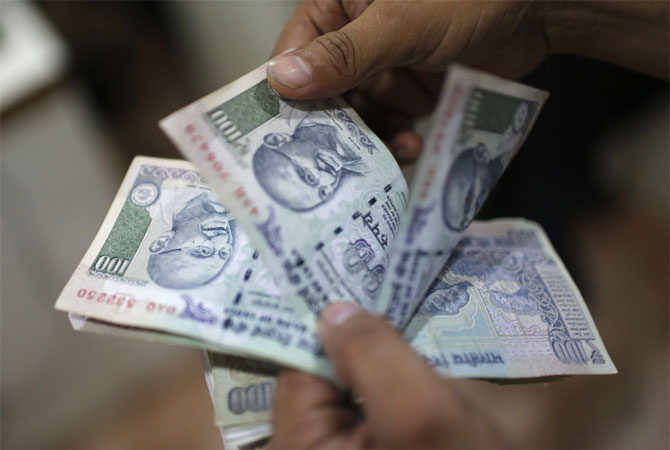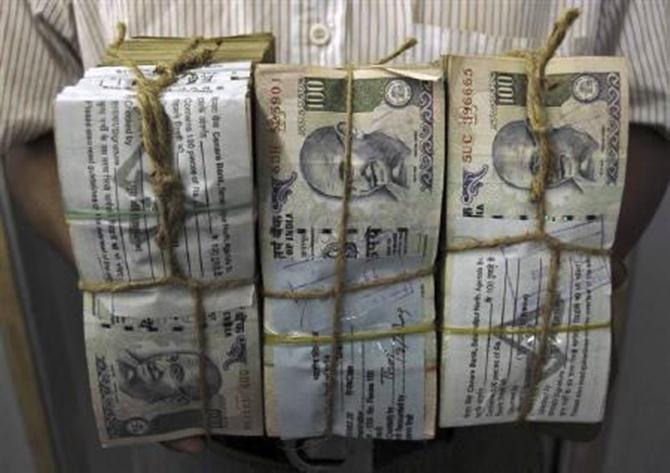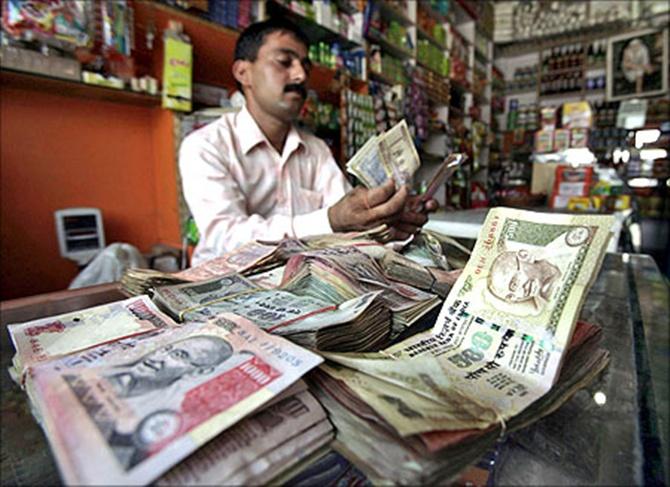Photographs: Reuters BS Bureau
The information technology (IT) and IT-enabled services sectors will clearly benefit enormously in the short term, being able to offset higher human capital costs with the depreciation.
The rupee’s sharp depreciation has been the most important issue in the current debate on the state of the economy.
However, contrary to the gloom and doom that seem to dominate the discussions, the depreciation is seen by some, and rightly so, as having some major collateral benefits.
A currency that has depreciated by about 40 per cent over the past two years should, in theory, make domestic producers significantly more competitive, even if everything else remained the same.
Exporters can price more aggressively in dollar terms, while preserving rupee margins.
…
How India can take advantage of the cheaper rupee
Photographs: Reuters BS Bureau
Those competing against imports domestically have a larger cushion. Of course, some think depreciation will not do very much for exports, while making unavoidable imports more expensive.
These two viewpoints are differentiated by their assessment of the price elasticities of demand for exports and imports. The optimists believe that elasticities are high, which means that exports will rise and imports will fall, contributing to a narrowing of the current account deficit.
The pessimists believe that elasticities are low, so the current account deficit might in fact widen as a result of the depreciation.
Pragmatically speaking, there isn’t much point in these sweeping generalisations. There are certainly some items whose exports and imports will show a strong response to the new exchange rate.
…
How India can take advantage of the cheaper rupee
Photographs: Reuters
Others may not, but that is another story. What is important for policy makers to focus on is how quickly they can deal with the various bottlenecks that might prevent the very promising depreciation dividend from being realised.
The information technology (IT) and IT-enabled services sectors will clearly benefit enormously in the short term, being able to offset higher human capital costs with the depreciation.
Among manufactured goods, the most obvious beneficiaries are textiles and garments, leather goods and, very importantly, automobile components. These are price-elastic, and India already has well-established producers and supply chains.
…
How India can take advantage of the cheaper rupee
Photographs: Reuters
But here is where the risks begin to manifest. Take, for example, Tamil Nadu. It has a strong presence of all these industries and, therefore, one should logically expect it to benefit enormously from the enhanced export competitiveness. But the state has had great difficulties with power.
One cannot expect to see significant increases in production without the availability of relatively cheap power. Similar stories of constraints – power, transport, raw materials and even workers – abound in other locations that are potential beneficiaries of rupee depreciation.
This is an opportunity that just cannot be wasted. The commerce ministry must immediately initiate an assessment of export opportunities that have opened up as a result of the depreciation and examine what needs to be done to fully exploit them.
…
How India can take advantage of the cheaper rupee
Image: Workers install electric cables on a lamp post in Nagapattinam near Chennai.Photographs: Kamal Kishore/Reuters
To the extent that some are already under way – the integration of the southern power grid with the rest of the country, for example – they need to be speeded up and closely monitored for progress.
Other opportunities may benefit from small but smartly designed and executed infrastructure enhancement, as well as streamlining of the procedural requirements.
Efforts at trade facilitation, enabling exporters to find partners and develop relationships, should also be enhanced.
Finally, inputs into design and quality control will both enhance export competitiveness and benefit domestic consumers who may now find domestically manufactured products of daily use cheaper than imports.
The difference between export pessimism and optimism is essentially a set of nimble policy action.







article